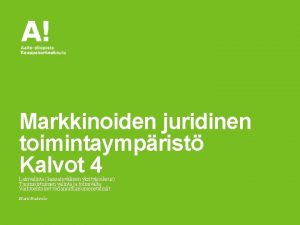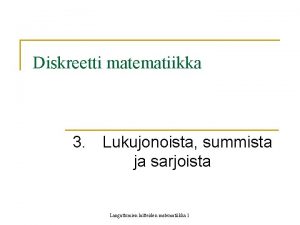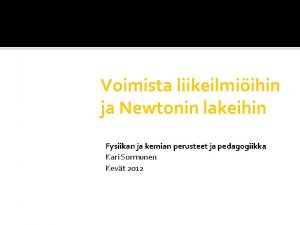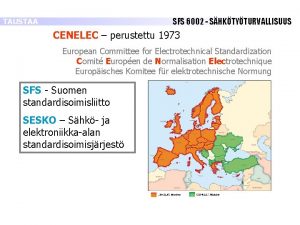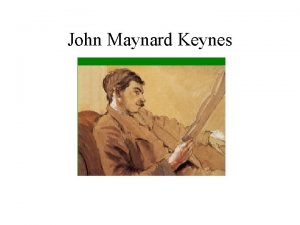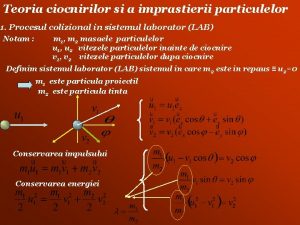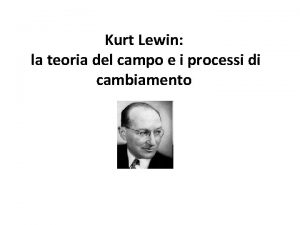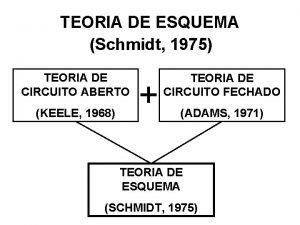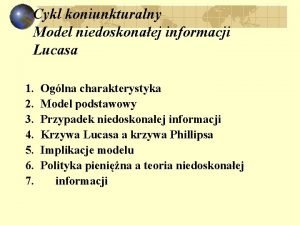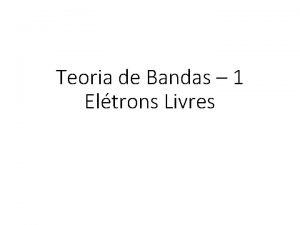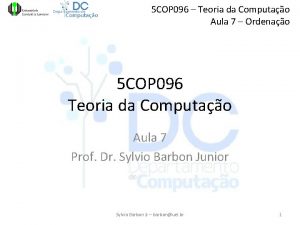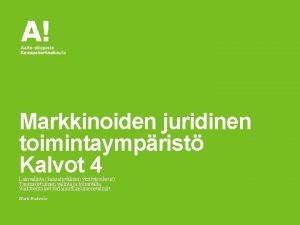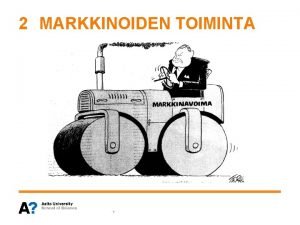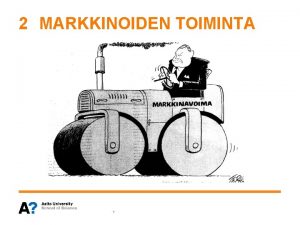Markkinoiden juridinen toimintaymprist Kalvot 2 Sopimusoikeuden yleinen teoria








































- Slides: 40

Markkinoiden juridinen toimintaympäristö Kalvot 2 Sopimusoikeuden yleinen teoria Sopimusten synty Tarjous – vastaus -malli Poikkeava vastaus Smart contract, blockchain ja PSD 2 Matti Rudanko

Functions of Contract Law 1 Defines if the parties have a binding contract and when the contract has been concluded Defines if the contract is valid Restricts the content of the contract (+ other contractual freedoms, slide 9) • Invalidity grounds • Related to the legal capacity and legal subjectivity of parties • Related to misbehavior of the parties (Contracts Act) • Related to underlying assumptions of the contract (error in motivation + error in expression; Contracts Act) • Especially in consumer protection law, regulation related to employment contracts and competition law Markkinoiden juridinen toimintaympäristö kalvot 2 2

Functions of Contract Law 2 Defines the breaches of contract by a party and legal remedies of the counterparty for that Contractual regulation helps when these conditions are not met: Transactions are trouble-free, if all participants are aware of their preferences and features of the products available can freely decide about their commitments and terms of contract and act according to the contract. Markkinoiden juridinen toimintaympäristö kalvot 2 3

What Is a Contract? Two expressions of will with the same content unite agreement = contract Bilateral legal act vs. unilateral legal act Business administrative view: Contract is an instrument to implement business decisions A means for risk management The collection of contracts is part of a company’s assets Economic view: Net benefits gained from contractual arrangement is positive Legal view: Pacta sunt servanda = agreements must be kept Markkinoiden juridinen toimintaympäristö kalvot 2 4

Contract Types Individual contract - standard contract Single contract – long-term contract Contracts between: • Entrepreneur – consumer (B 2 C) • Entrepreneur – Entrepreneur (B 2 B) • Consumer – Consumer (C 2 C) Different forms: • Oral • Specified form (written, with witness, notary) Markkinoiden juridinen toimintaympäristö kalvot 2 5

Smart contracts A general definition of a smart contract would be a computer program that can automatically execute the terms of a contract. By being selfexecuting and having property ownership information embedded, they can solve the problems of counterparty trust. Banks are expected to start turning paper syndicated loans into smart contracts where the terms and conditions are programmed, then shared to the syndicate of lenders across the distributed ledger. P. 30 - 31 Markkinoiden juridinen toimintaympäristö kalvot 2 6

What is the blockchain? Until cryptocurrencies came along, no one had the ability to transmit value at a distance without the permission and support of a third party. A blockchain is a network of computers, where all the members of the network maintain a shared, trusted, public ledger that everyone can inspect, but that no single user controls. The ledger is built using a linked list, or chain, of blocks, where each block contains a number of transactions that was performed in a given timespan. The global distributed ledger facilitates the movement of assets across the world in seconds, with only a minimal transaction fee. These assets can be any type of value, as long as they can be represented digitally. Markkinoiden juridinen toimintaympäristö kalvot 2 7

The blockchain network P. 9: Each member of the network, called a node, holds a chain of blocks which constitutes a total history of transactions performed on the network. Each block holds a set of transactions, which size depends on how many transactions were completed Markkinoiden juridinen toimintaympäristö kalvot 2 8

Transaction stages P. 10 – 11: Transaction definition Block chaining Block validation Transaction authentication Block creation Markkinoiden juridinen toimintaympäristö kalvot 2 9

The PSD 2 disruption PSD 2 enables bank customers, both consumers and businesses, to use third-party providers to manage their finances. In the near future, you may be using Facebook or Google to pay your bills, making P 2 P transfers and analyse your spending, while still having your money safely placed in your current bank account. Banks, however, are obligated to provide these third-party providers access to their customers’ accounts through open APIs (application program interface). This will enable third-parties to build financial services on top of banks’ data and infrastructure. Markkinoiden juridinen toimintaympäristö kalvot 2 10

Technology based business innovations New entrants no longer will offer the full banking experience package to enter the financial market due to the increased use of APIs. New entrants can now focus on offering just a single service and connect to other service providers through cloud solutions or APIs. Also, new improved services within payments are emerging, making banking both faster and easier. Contactless payments and mobile solutions are services that technology have recently led to. Markkinoiden juridinen toimintaympäristö kalvot 2 11

Permissioned Ledgers: Industry. Level Systems of Record PAGE 14 In a permissioned ledger, the validation process is controlled by a pre-selected set of nodes. It is a system run by a consortium of financial institutions, where a certain majority have to sign every block in order for it to be valid. The access rights to read the blockchain might be public or restricted to just a certain number of participants, such as government -approved auditors. Markkinoiden juridinen toimintaympäristö kalvot 2 12

Permissionless Ledgers: Censorship resistant P. 15: there is no gating or authorizing process to enroll into the transactions scheme (a public ledger). Everyone is free to download a copy of the blockchain ledger, and they are able to join as anonymous validators by performing computationally intensive proof-of-works. Public ledgers may be practical for primarily on -chain assets, meaning assets that are endogenous and created on the ledger (e. g Bitcoin). Off-chain assets are not controllable by the validators in the same way as the native assets, and any conflicts in a transaction would need to be solved by an outside party or legal entity. Markkinoiden juridinen toimintaympäristö kalvot 2 13

Transfer of payments In the payments space, the biggest challenges financial institutions face have to do with the silos within banks. Many of them have built various and complex IT Infrastructure. At a procedural level, the process of inter-bank clearing requires an intricate coordination of resource-intensive steps between banks, clearing houses, and the central bank. Recording all transactions in real-time on a blockchain ledger would mean more efficient execution of inter-bank payments. The central bank would need to launch a digital asset, preferably a cryptocurrency, which all parties agree upon as being representative of the same liability. P. 32 – 35 Markkinoiden juridinen toimintaympäristö kalvot 2 14

Capital markets Trading on the market: (p. 38 – 40) Create a representation of an asset, such as a currency, bonds, stocks, gold, etc. Enable a trade to take place between two or more stakeholders. Balances must be recorded and kept. The eventual liquidation of an investor’s position By adopting a shared distributed ledger platform, stakeholders could be eliminating the need for replication and duplication of the same data E. g. Nasdaq & Chain Markkinoiden juridinen toimintaympäristö kalvot 2 15

On a shared distributed ledger platform Asset creation: Any type of asset can be created on the network if the trading partners are in agreement. Trading: Assets can be traded on the network with a minimal transaction fee in atomic transactions (either fully executed, or not at all) Balance: Balances are recorded on an shared replicated ledger where each position are constantly netted. Settlement: The network can also host the currency assets that back the tradable assets Markkinoiden juridinen toimintaympäristö kalvot 2 16

Who is allowed to conclude contracts? Legal subjects: have rights and obligations/may gain rights and become obliged • Natural persons (from birth to death) • Legal persons (from establishment to dissolution) Legal capacity: a person can conclude legal acts with contractual validity (legal persons only by agents) • Natural persons: full legal capacity: at least 18 years old • Lack of legal capacity • Court has limited one’s legal capacity • Diminished responsibility (drunkness, illness) • Legal incapacity = the court has declared one to be legally incompetent or one is under 18 years old Markkinoiden juridinen toimintaympäristö kalvot 2 17

Who Is Allowed to Conclude Contracts? Allowed legal acts of legally incompetent person An incompetent person may enter into transactions which, in view of the circumstances, are usual and of little significance An incompetent person has the right to decide on the proceeds of his/her own work earned during the Incompetency Right to manage the assets that the guardian has given him A 15 -year-old person is allowed to enter into/terminate an employment contract Markkinoiden juridinen toimintaympäristö kalvot 2 18

About Contractual Legislation 1 Private Autonomy (freedom of contract) -> freedom to decide about: Form and contents of contract With whom one makes a contract Rescission (cancellation / termination) of contract Central laws regulating contracts Contracts Act 1929 (partly mandatory): How a contract is concluded, invalidity and adjustment of contracts, authority Sale of Goods Act 1987: Duties and rights of seller and buyer (non-mandatory) Consumer Protection Act 1978 (mandatory) Special legislation related to some contracts: housing, employment contract, insurance contract Markkinoiden juridinen toimintaympäristö kalvot 2 19

About Contractual Legislation 2 Private autonomy + legislation -> Statute hierarchy: 1. Mandatory law (usually limits the freedom of contract) Example: disagreement about delivery time: 1. Existence of mandatory law? No. Example: Sale of real estate: Oral contract 1: existence of mandatory law? Yes. Code of Real Estate: written contract and notarial attestation 2. Contract 3. Established practice between parties, commercial customs 4. Non-mandatory law 2. What says contract? Nothing. If the parties haven’t agreed anything about delivery time, non-mandatory law defines the delivery time The contract is invalid. Markkinoiden juridinen toimintaympäristö kalvot 2 20

Role of General Principles E. g. General principles of contract law Can be found from preworks, jurisdiction, precedents and statutes • Contracts are binding • Loyalty (solidarity) towards the other party • Economic rationality No fixed priority order Significance of general principles • Interpretation of law • When no law regulating the matter exists Markkinoiden juridinen toimintaympäristö kalvot 2 21

Limitations of Freedom of Contract Mandatory legislation to protect common good or the weaker party: Exception from Freedom to decide about form: Sale of real estate: form requirement not met invalidity of contract All form requirements in Finnish law consist of demand for written contract + possibly public notary/witness Exception from Freedom to decide about content: Labour law, consumer law: protection of the weaker party Contracts/terms considered to be against good manner The position of third party, Contracts’ inconformity with competition law Adjustment of contracts Markkinoiden juridinen toimintaympäristö kalvot 2 22

Limitations of Freedom of Contract 2 Obligation to contract (exception from freedom to choose contracting party) necessities or goods/services related to everyday life (Water, electricity, mail, bank account usually obligation of state-owned companies) Controlling position in the market Public procurement (states, municipalities buy services and goods from companies): misuse of controlling position is prohibited the most profitable one must be chosen Prohibition of discrimination Criminal Code Nondiscrimination act Employment contracts act compensation for damages if company refuses to make a contract Markkinoiden juridinen toimintaympäristö kalvot 2 23

On Permanence of Contracts Possibilities to terminate the contract (main rule: pacta sunt servanda) Cancellation of contract (grounds in contractual legislation): serious breach of contract Contract is invalid (Contracts act Ch. 3: duress, inappropriate persuasion etc. ) Adjustment of contract (Contracts Act Sect. 36, e. g. changes in conditions) Notice (Long-term contracts) Freedom of notice main rule Freedom limited for the protection of the weaker party Freedom of notice can also be extended for securing a fair exit to the weaker party As a rule, parties can agree on procedures, grounds (e. g. changes in conditions) and periods of notice Regulation on procedures, grounds and periods of notice (rent, employment relationship) Markkinoiden juridinen toimintaympäristö kalvot 2 24

On Permanence of Contracts 2: Possibilities to Alter the Terms of the Contract: Main rule: Unilateral alteration not possible (exception: special agreement on right of alteration ) Parties may agree about altering terms Renegotiation- and hardship –terms entitle to multi- or unilateral alteration Parties agree that only a third can alter terms Implied altering (consent by silence or contributing behavior) Court can alter an unreasonable term (adjustment) Markkinoiden juridinen toimintaympäristö kalvot 2 25

Conclusion of Contract Conclusion types according to Contracts Act (1929) Offer- Acceptance (and auction) Other types In Finnish law a contract is established if a consensus is reached about engaging into a contract and contents of the contract Contract negotiations: consensus reached step by step, not at once (cf. offer – acceptance –model) Contracts based on circumstances: parking, public transport Implied contract: cooperation between parties which indicates that contractual relationship exists but difficult to trace when or how the contract is concluded. Markkinoiden juridinen toimintaympäristö kalvot 2 26

Offer-Acceptance -Model 1 Offer (given by the Offeror) and Reply/ Acceptance (given by the Offeree) The binding force of the offer starts when the offer has come to the offeree’s attention. The Offer must be formulated in a way that the offeree is able to answer “yes” or “no” to the offer Binding nature of an offer: the offeree has the option of concluding the contract by answering “yes” Markkinoiden juridinen toimintaympäristö kalvot 2 27

Offer-Acceptance -Model 2 Validity time of the offer: The acceptance must reach the offeror during validity time, limited by the offer An offer made orally without granting a fixed time for acceptance shall be accepted immediately; unless an immediate acceptance is given, the offer is considered rejected The Contracts Act: the acceptance shall reach the offeror within a reasonable time Markkinoiden juridinen toimintaympäristö kalvot 2 28

Offer-Acceptance-Model 3 Acceptance (“Yes”) that reaches the offeror on time (agreed / reasonable time / oral>immediately) Negative answer (”No”) No answer during the validity time of the offer Positive answer (”Yes”) different from the offer Positive answer (”Yes”) arriving late Concludes the contract Binding nature of offer lapses • No contract Binding nature of the offer lapses • No contract new offer Binding nature of the original offer lapses By accepting the new offer the original offeror concludes the contract Markkinoiden juridinen toimintaympäristö kalvot 2 29

Offer-Acceptance-Model 4 Contracts Act: “A reply that purports to be an acceptance but which, due to an addition, restriction or condition, does not correspond to the offer, shall be deemed a rejection constituting a new offer. ” Contracts Act: ”An acceptance that reaches the offeror too late shall be deemed to constitute a new offer made by the original acceptor. ” Markkinoiden juridinen toimintaympäristö kalvot 2 30

Offer-Acceptance-Model: Exceptions Effect of a deviant reply shall not apply if the offeree has considered the reply to correspond to the offer and the offeror must have understood the same. If the offeror in that case does not wish to accept the reply, he/she shall, without undue delay, notify the offeree thereof; Deviant reply the real will of the offeree deviates from the offer Cf. error in expression Answer (expression of will) deviates from the real will of the offeree otherwise a contract shall be deemed concluded on the terms contained in the reply a) resulting in an erroneously positive answer b) resulting in an erroneously deviating answer: • may constitute an invalidity • ordinary rules on deviant ground (Contracts Act S. 32) replies apply (unless the offeror should have noticed the error -> binding contract? ) Markkinoiden juridinen toimintaympäristö kalvot 2 31

Offer-Acceptance-Model: Exceptions Effect of a late reply shall not apply if the acceptor has assumed that the acceptance has reached the offeror within due time and the offeror must have understood the same. If the offeror in that case does not wish to accept the acceptance, he/she shall, without undue delay, notify the acceptor thereof; otherwise a contract shall be deemed concluded by way of the acceptance Markkinoiden juridinen toimintaympäristö kalvot 2 32

Cf. The International Regulation Unidroit Principles article 2. 1. 11 (and CISG art. 19: Modified acceptance) (1) A reply to an offer which purports to be an acceptance but contains additions, limitations or other modifications is a rejection of the offer and constitutes a counter-offer. (2) However, a reply to an offer which purports to be an acceptance but contains additional or different terms which do not materially alter the terms of the offer constitutes an acceptance, • unless the offeror, without undue delay, objects to the discrepancy. If the offeror does not object, the terms of the contract are the terms of the offer with the modifications contained in the acceptance. Markkinoiden juridinen toimintaympäristö kalvot 2 33

The International Regulation, Cont. Unidroit Principles article 2. 1. 9 (and CISG art. 21: Late acceptance. Delay in transmission) (1) A late acceptance is nevertheless effective as an acceptance if without undue delay the offeror so informs the offeree or gives notice to that effect. (2) If a communication containing a late acceptance shows that it has been sent in such circumstances that if its transmission had been normal it would have reached the offeror in due time, the late acceptance is effective as an acceptance • unless, without undue delay, the offeror informs the offeree that it considers the offer as having lapsed. Markkinoiden juridinen toimintaympäristö kalvot 2 34

Offer-Acceptance -Model 5 REVOCATION OF AN OFFER OR ACCEPTANCE (Contracts Act S. 7) An offer or an acceptance that is revoked shall not be binding, if the revocation reaches the person to whom it is addressed before, or at the same time as, the offer or acceptance comes to his/her attention Revocation is possible also later if the parties have so agreed Markkinoiden juridinen toimintaympäristö kalvot 2 35

Offer-Acceptance-Model 6 OTHER ISSUES: Distinguishing binding offer and mere preparation of contract: Offeror’s desire to bind himself, Expressions must be clear and detailed enough so that the offeree can decide about her commitment, Expressions have to be directed to limited group of people. Marketing advertisements: Not considered as binding offers but rather invitations to make offers. Markkinoiden juridinen toimintaympäristö kalvot 2 36

Standard Terms 1 Standard terms: • Term collection, drawn up beforehand • Intention to use the collection in multiple contract relations • Function: to minimize transaction costs, uniform contractual practices Different kinds of standard terms: • Standard terms drafted unilaterally • Standard terms drafted bilaterally (agreed documents) • Standard terms drafted by company/entrepreneur and confirmed by public officer (in Finland the Consumer Ombudsman) The need to protect the counterparty varies in these situations Markkinoiden juridinen toimintaympäristö kalvot 2 37

Standard Terms 2 Protection of the other party – goals enhancing the level of awareness about the content and consequences of standard terms, especially in case of unilaterally drafted terms compensating the imbalance between parties: Protection of the other party - in which respects and with which criteria Criterium 1: How the standard terms are attached to the contract Criterium 2: Demand to highlight strict and surprising terms Markkinoiden juridinen toimintaympäristö kalvot 2 38

Standard Terms 3 Attaching the standard terms to the contract – valid alternatives: 1. Standard terms are included in the same contract paper that is used 2. Web-based trade: buyer must read and approve standard terms before ordering 3. Contract paper refers to the terms and states them to be applied Prerequisite: Adverse party must have had an opportunity to explore the content of the standard terms = Adverse party must be aware of where he/she can explore the terms or the terms have been presented to him/her beforehand Markkinoiden juridinen toimintaympäristö kalvot 2 39

Standard Terms 4 Attaching the standard terms to the contract (cont. ) 3. Standard terms become part of contract due to commercial or contractual practice, especially when 1) standard terms are formed together by both parties (“agreed documents”) and when 2) same standard terms have been used before by parties. Strict and surprising terms Demand to highlight -> How? What is a non-strict term: Comparison with non-mandatory law and general principles in contract law If non-strict term didn’t appear among terms, the balance of obligations wouldn’t change Markkinoiden juridinen toimintaympäristö kalvot 2 40
 Kalvot
Kalvot Juridinen
Juridinen Huolintasopimus
Huolintasopimus Sopimusoikeuden yleiset periaatteet
Sopimusoikeuden yleiset periaatteet Geometrinen lukujono
Geometrinen lukujono Newtonin 2 laki
Newtonin 2 laki Eroosiokorroosio
Eroosiokorroosio Gravitaatiolaki
Gravitaatiolaki Maistraatti turku edunvalvonta
Maistraatti turku edunvalvonta Yrittäjän asumistuki laskuri
Yrittäjän asumistuki laskuri Yleinen sähkötyöturvallisuus sfs 6002
Yleinen sähkötyöturvallisuus sfs 6002 Fysiikka 2 tiivistelmä
Fysiikka 2 tiivistelmä Teoria da burocracia
Teoria da burocracia Teoria de la ventaja absoluta adam smith
Teoria de la ventaja absoluta adam smith Teoría sintética de la evolución
Teoría sintética de la evolución Teoria di keynes
Teoria di keynes Emozioni primarie
Emozioni primarie Teoria ciocnirilor
Teoria ciocnirilor Economia pesqueira
Economia pesqueira Teoría de coleman
Teoría de coleman Procesy przeduwagowe
Procesy przeduwagowe Teoría focal de coleman
Teoría focal de coleman Teoria sorgente filtro
Teoria sorgente filtro Teoria duas celulas duas gonadotrofinas
Teoria duas celulas duas gonadotrofinas Teoria psicoanalitica
Teoria psicoanalitica Teoria da biogeografia de ilhas
Teoria da biogeografia de ilhas Anton van leeuwenhoek teoria de la generacion espontanea
Anton van leeuwenhoek teoria de la generacion espontanea Daniel kahneman teoria de las perspectivas
Daniel kahneman teoria de las perspectivas Teoria del campo psicologia
Teoria del campo psicologia Programa motor generalizado
Programa motor generalizado Teoria niedoskonałej informacji lucasa
Teoria niedoskonałej informacji lucasa Teoria delle ombre
Teoria delle ombre Klasyczne teorie zarządzania
Klasyczne teorie zarządzania Conclusión lógica
Conclusión lógica Energia de fermi
Energia de fermi Teoria della programmazione lineare
Teoria della programmazione lineare Teoria da computacao
Teoria da computacao Falácia do espantalho
Falácia do espantalho Humores de hipócrates
Humores de hipócrates Que es la notacion de kendall
Que es la notacion de kendall Teoria de ausubel aprendizaje significativo
Teoria de ausubel aprendizaje significativo

